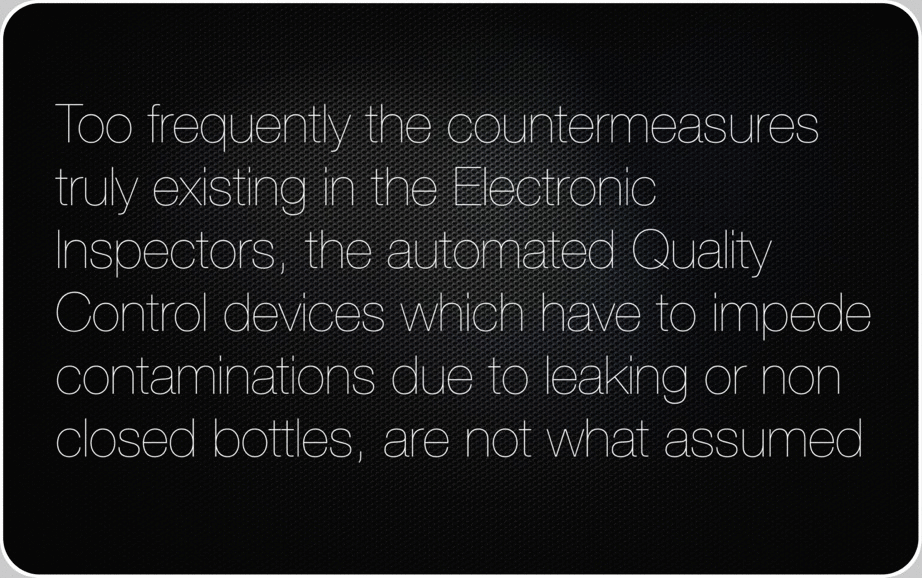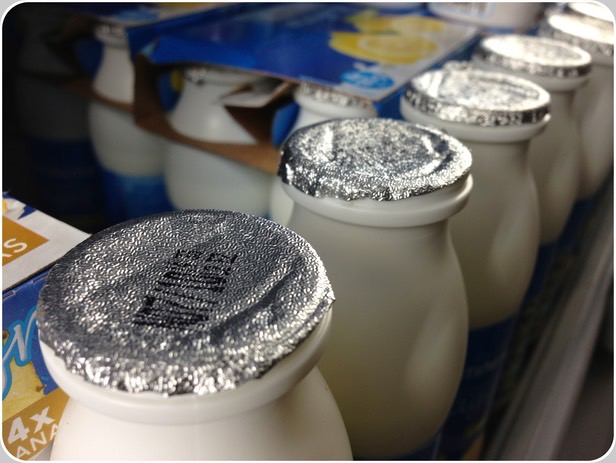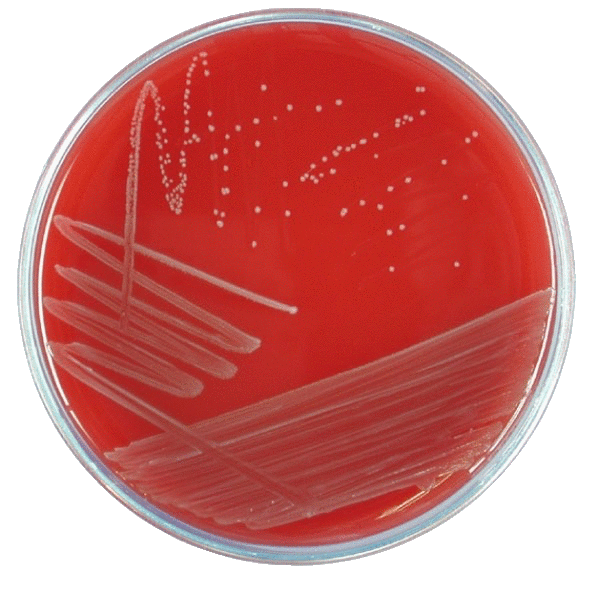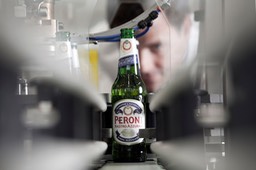![]() A few contaminated bottles can cost you millions in: product withdrawal, product replacement, business interruption, loss of earnings and, because of the power assumed today by the Media, crumbling shares
A few contaminated bottles can cost you millions in: product withdrawal, product replacement, business interruption, loss of earnings and, because of the power assumed today by the Media, crumbling shares
“False rejects’ volume, implicit in the adoption of the camera-technology, conjures to let the Risk [of sensitive beverages ingested by Consumers] be ranging (5 - 10)%, rather than the supposed <0.1%”

No balance sheet has a line for Clostridium Botulinum or Listeria. And too frequently the countermeasures truly existing in the Electronic Inspectors, the automated Quality Control devices which have to impede contaminations due to leaking or non closed bottles, are not what assumed. Understand your exposure by mean of Graphene’s technical exam of the real situation at you site.
A sensitive beverage, like the juice without added preservatives, also if aseptically filled in the ideal conditions, is destined to become a Septic Beverage if the bottle is later not truly closed. The image above shows Leakage Inspection equipment in a COCA-COLA factory
A few contaminated bottles can cost you millions in:
- product withdrawal,
- product replacement,
- business interruption,
and loss of earnings. Understanding your risk can help you minimize the impact. Graphene® assess the risk of a product recall to you, and boils it down to one number. Fast and confidential. So that you can make informed decisions to protect your Customers, your supply chain, and your bottom line.
Closure relevance
It is frequently oversight that a closure represents a logical function “IF“, conditioning Food and Beverage Safety. Since they started to circulate the plastic caps advertised to be acting like a seal + cap, the bitter reality we discovered is exactly the opposite than that expected by the collective imaginary of the worldwide Food and Beverage professional community. Also, all systems to control the closure control only the closure and not the leakage associated to a slightly mal positioned cap. Because of this reason all cameras-only equipped systems (whatever their Vendor), say those systems whose inspections are exclusively electromagnetics, cannot guarantee the Beverage Safety levels desired by the Bottlers of sensitive products. Levels whose digits, in the end of the chain, correspond to maximum acceptable risks to contaminate physical persons. The relative porcentage of the Risk of open, potentially Septic, bottles truly shipped to final Customers is much higher than imagined or acceptable.
It is frequently oversight that a closure represents a logical function “IF“, conditioning Food and Beverage Safety. Since they started to circulate the PET caps “advertised to be acting like a seal + cap”, the bitter reality we discovered is exactly the opposite than the public one. Also, all systems to control the closure, control only the closure and not the leakage associated to a slightly mal positioned cap. Because of this reason all camera-only equipped systems, imply security levels much lower than you imagine. The relative porcentage of Risk of open and potentially Septic bottles truly shipped to Customers, is much higher than imagined or acceptable. False rejects’ volumes, implied in the adoption of the visual inspection (cameras-only) technology, conjuring to let the Risk be ranging (5 - 10) %, rather than the < 0.1 % imagined by the Bottler’s Quality Control Department


The volume of the false rejects, implied in the adoption of the visual inspection (cameras-only) technology, conjures to let the Risk be ranging (5 - 10) %, rather than < 0.1 % imagined by the Bottler’s Quality Control Department. We know this, what could be defined the Contaminated Customers' Accountancy Level, in its fine details since 2003. Since then part of different Aseptic Fillling pilot projects. When during an Aseptic Line acceptance test all of the bottles, several thousands, are individually manually-tested for eventual leakage after the Electronic Inspector to assess the real Risk of contamination associated to the operation of the Aseptic Lines the False Negatives makes their appearance.
![]() Manually squeezing one-by-one many thousands of bottles, looking for leakages immediately after the Electronic Inspector, the False Negatives, say the truly leaking dangerous bottles erroneously considered Negative and then non rejected, it is built up the reality. Reality which only a statistically-based test may let us see. An impressive amount of non-sealed open containers leaving the Bottling Line, as frequently the Quality Control Staff yet suspected
Manually squeezing one-by-one many thousands of bottles, looking for leakages immediately after the Electronic Inspector, the False Negatives, say the truly leaking dangerous bottles erroneously considered Negative and then non rejected, it is built up the reality. Reality which only a statistically-based test may let us see. An impressive amount of non-sealed open containers leaving the Bottling Line, as frequently the Quality Control Staff yet suspected
An Aseptic Bloc including Filler and a Capper with electronic inspection heads, measuring each cap’s individual torque. Also integrating sensors of an external Full bottle Inspector (final inspection system)


Lysteria
Manually squeezing (one-by-one) thousands of bottles, looking for leakages immediately after the Electronic Inspector, the False Negatives, say the truly leaking dangerous bottles erroneously considered Negative (safe bottles) and then non rejected, it is built up the reality which only a statistically-based test may let us see.
This also when the Capping, Closing or Sealing Machines are operating in their best conditions, say with truly minimum defective closings and sealings. Same is true for the Electronic Inspectors who are controlling those seals. Set at their best overall performances and high sensitivity. We are trying to clear that the relevance of the False Rejects’ volume, implicit in the adoption of the camera-technology, conjures to let the Risk be ranging (5 - 10) %, rather than the < 0.1 % imagined by the Quality Control Departments. Quite obviously, to know the fine details of this accountancy, is a matter to enter in contact with specialists not acting in conditions of conflict of interests, assessing the risk on a case-by-case base.
![]() Extensive microbiological testing performed in the ABInbev® Bottling Lines yet as early as in 1998, immediately before and after the Empty Bottle Inspectors, showed a marked dip in the count of bacterias in the glass returnable bottles. Deeper analysis associated this increased hygiene of the bottles, immediately before to be filled and closed, with the fact that each one bottle was irradiated by eight different strobo flashers (~30 joules each) during its passage through the EBI. Strobo flashes with a broad UV part of their radiant energy spectrum. Now, ask yourself, what should the count have been if the closing should not have been accomplished at all… Bacterial presence in the air, with the assistance of the energy provided by sunbeams, should have assured their reproduction in the sugar-rich beverage
Extensive microbiological testing performed in the ABInbev® Bottling Lines yet as early as in 1998, immediately before and after the Empty Bottle Inspectors, showed a marked dip in the count of bacterias in the glass returnable bottles. Deeper analysis associated this increased hygiene of the bottles, immediately before to be filled and closed, with the fact that each one bottle was irradiated by eight different strobo flashers (~30 joules each) during its passage through the EBI. Strobo flashes with a broad UV part of their radiant energy spectrum. Now, ask yourself, what should the count have been if the closing should not have been accomplished at all… Bacterial presence in the air, with the assistance of the energy provided by sunbeams, should have assured their reproduction in the sugar-rich beverage
Links to other pages:

Links to related topics: IntroductionRoot Cause Analysis (RCA) is much more than a technique of investigation of Industrial Machinery's inefficiencies or malfunctions. Part of it are the pillars of the…

“Project: Middle English projecte, from Medieval Latin projectum, from Latin, neuter of projectus, past participle of proicere to throw forward, from pro-jacere to throw” (Merriam Webster dictionary definition of “Project”, an Encyclopedia Britannica Co., 2014)

“False rejects’ volume, implicit in the adoption of the camera-technology, conjures to let the Risk [of sensitive beverages ingested by Consumers] be ranging (5 - 10)%, rather than the supposed <0.1%”

Graphene's staff played since 1990 on side of the Vendors' of machinery in the Technical Design and in the Field Engineering Departments. Designing before, later commissioning packaging and textile machinery, automated quality assurance electronic inspection equipment and related Conveyors. …

Field Service EngineeringGraphen is built over an experience of almost thirty years in the industry of the automatic machinery and copntrols. Last twenty serving global Food and Beverage Manufacturers and Logistics. …
Contact
This website has no affiliation with, endorsement, sponsorship, or support of Heuft Systemtechnik GmbH, MingJia Packaging Inspection Tech Co., Pressco Technology Inc., miho Inspektionsysteme GmbH, Krones AG, KHS GmbH, Bbull Technology, Industrial Dynamics Co., FT System srl, Cognex Co., ICS Inex Inspection Systems, Mettler-Toledo Inc., Logics & Controls srl, Symplex Vision Systems GmbH, Teledyne Dalsa Inc., Microscan Systems Inc., Andor Technology plc, Newton Research Labs Inc., Basler AG, Datalogic SpA, Sidel AG, Matrox Electronics Systems Ltd.
